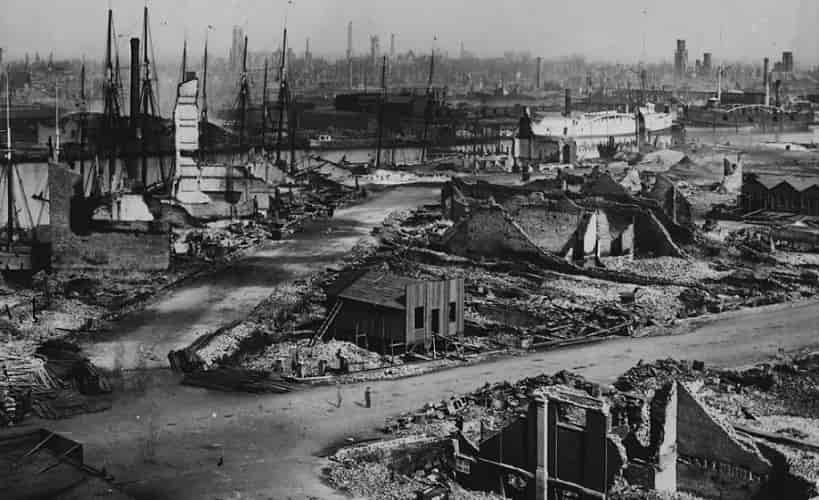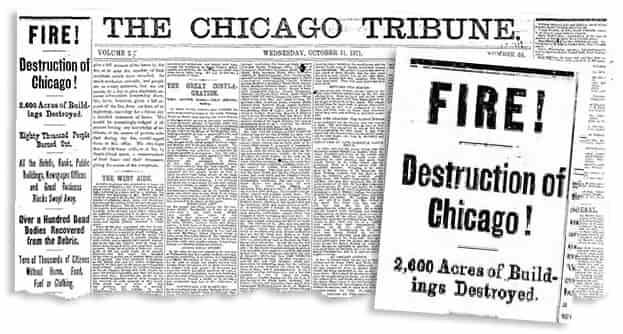The Great Chicago Fire: A Historical Tragedy That Shaped a City

The Great Chicago Fire remains one of the most devastating and transformative events in American history. This infamous fire, which ravaged the city of Chicago from October 8 to October 10, 1871, not only destroyed a large portion of the rapidly growing metropolis but also sparked widespread urban development reforms and fire safety measures. In this article, we will delve into the causes, impacts, and legacy of the fire, as well as its role in shaping modern Chicago.
The Start of the Inferno: Myth and Reality
The exact cause of the Great Chicago Fire has been debated for over a century. The most famous legend involves a cow owned by Mrs. Catherine O’Leary, who allegedly kicked over a lantern in her barn, starting the blaze. However, there is no solid evidence to support this, and many historians believe the true cause may never be known. Alternative theories suggest that it could have been a combination of dry weather, strong winds, and wooden buildings that created the perfect conditions for a massive fire.
At the time, Chicago was a booming city, largely constructed from wood, with buildings and sidewalks made of highly flammable materials. Coupled with a long drought and unusually warm weather, these factors made the city a tinderbox waiting to ignite.
The Destruction: Fire’s Path Across the City
Once the fire began, it spread quickly. Fanned by strong winds, the fire leaped from building to building, engulfing homes, businesses, and iconic landmarks. The flames spread so fast that the city’s firefighting department, already stretched thin from battling a smaller fire the day before, struggled to keep up.
In just a few hours, entire neighborhoods were reduced to ashes. The firestorm grew so intense that Lake Michigan, located adjacent to the city, did little to stop the fire’s march. Even the city’s courthouse, hotels, churches, and the Chicago Tribune building were not spared.
By the time the fire was extinguished on October 10, it had burned over 3 square miles (9 square kilometers), leaving 100,000 people—about one-third of the city’s population—homeless. The Great Chicago Fire claimed the lives of approximately 300 people and destroyed over 17,000 buildings.
Aftermath: A City in Ruins
The aftermath of the fire was devastating. Survivors fled to temporary shelters or camped near Lake Michigan, seeking refuge from the smoldering ruins of their homes. The city’s infrastructure was destroyed, and thousands of businesses were wiped out. However, even amid this tragedy, Chicago’s resilience quickly became apparent.

Relief efforts poured in from across the country and the world, with donations of money, supplies, and construction materials. Chicago began the monumental task of rebuilding, but this time with a focus on fireproofing and urban planning. Stone and brick buildings replaced wooden structures, and modern fire codes were enacted to prevent future disasters.
The Legacy of the Great Chicago Fire
While the Great Chicago Fire caused immense destruction, it also became a catalyst for progress. The rebuilding effort ushered in a new era of architectural innovation and urban planning that helped transform Chicago into a global city. The fire prompted stricter building codes, better planning for public services, and more efficient firefighting methods.
It also fostered a sense of unity among the citizens of Chicago. The fire showed the importance of community resilience, with citizens working together to rebuild their neighborhoods and businesses. In the years following the disaster, the city’s economy not only recovered but thrived. Within a few decades, Chicago emerged as one of the leading industrial and financial centers in the United States.
The fire also became an integral part of the city’s identity. The Phoenix, a symbol of rebirth, was adopted by the city to represent its recovery from the ashes. In 1893, just 22 years after the fire, Chicago hosted the World’s Columbian Exposition, further cementing its status as a global city.
Commemorating the Fire
Each year, the Great Chicago Fire is commemorated as part of Fire Prevention Week, a national observance in the United States that emphasizes fire safety education and awareness. The fire serves as a reminder of the importance of emergency preparedness and the devastating impact that unchecked fires can have on urban communities.
The site of Mrs. O’Leary’s barn, where the fire allegedly started, is now home to the Chicago Fire Academy, a fitting tribute to the city’s commitment to fire safety. The tragic event is also memorialized through various historical markers and museums throughout the city, allowing future generations to learn about and reflect on this pivotal moment in Chicago’s history.
The Great Chicago Fire was a monumental event that forever changed the course of Chicago’s history. Though it left a path of destruction, it also paved the way for the city’s growth into a major urban hub known for its architectural prowess and innovation. The legacy of the fire is one of resilience, transformation, and the enduring spirit of a city that rose from its own ashes.
FAQ About the Great Chicago Fire
1. What caused the Great Chicago Fire?
The exact cause of the Great Chicago Fire is unknown. The most popular legend suggests that a cow owned by Mrs. Catherine O’Leary kicked over a lantern in her barn, sparking the fire. However, this has never been proven, and modern historians believe it may have been a combination of dry weather, wooden structures, and strong winds that fueled the fire.
2. How many people died in the Great Chicago Fire of 1871?
Approximately 300 people lost their lives in the Great Chicago Fire. While this number is significant, it is considered relatively low given the scale of the destruction, which left 100,000 people homeless and leveled more than 17,000 buildings.
3. Was the Great Chicago Fire the worst fire?
While the Great Chicago Fire was one of the most devastating urban fires in U.S. history, it was not the deadliest. The Peshtigo Fire in Wisconsin, which occurred on the same day, claimed over 1,200 lives, making it the deadliest fire in U.S. history. However, the Great Chicago Fire is often remembered for the scale of destruction in a major city and its lasting impact on urban development.
4. How long did the Great Fire in Chicago last?
The Great Chicago Fire lasted for about two days, starting on the evening of October 8, 1871, and continuing until it was finally extinguished on October 10, 1871.
5. When did the Great Chicago Fire start and end?
The fire began on October 8, 1871, around 9 p.m., and lasted until the early hours of October 10, 1871. Strong winds and dry conditions contributed to its rapid spread across the city.
6. How did the Great Chicago Fire end?
The Great Chicago Fire eventually ended due to a combination of factors, including a change in weather conditions. By the evening of October 9, a rainstorm moved in, helping to douse the flames. However, by that point, the fire had already caused widespread destruction across the city.
